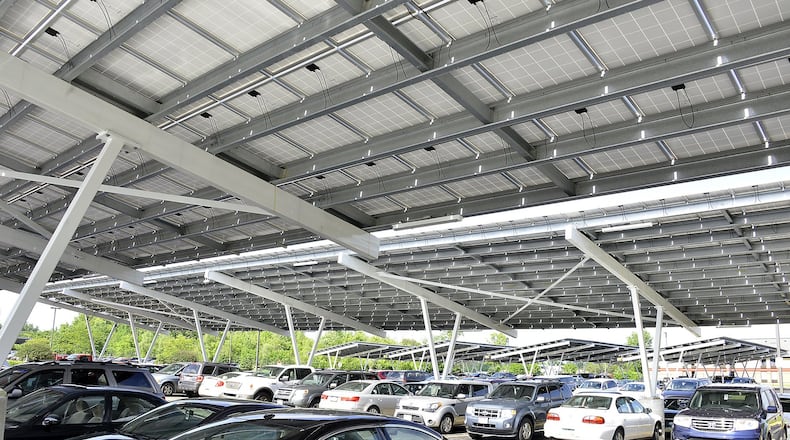“Right now, the city doesn’t allow somebody to have solar that’s interconnected with our electric system,” said Nathan Perry, utility business manager for the city’s utility business services division. “So what we’re doing is a presentation that outlines the background on solar interconnection standards and giving the customers some information on what we’re proposing for city council consideration.”
Businesses are invited to the meeting as well, Perry said.
To be covered during the meeting are proposed interconnection standards, rules, regulations and the possible rates the city’s electric utility would pay property owners for their excess solar electricity, Perry said. Another goal is to “see how people feel about the way that we’re heading with this, and then we can take some time to revisit anything before we take it to council consideration.”
“It seems like we maybe get a couple calls a month from people who are interested in solar,” Perry said. “So we’ve been working to develop these rules and regulations, and looking at our cost structure with our rate consultant to determine a rate that will allow us to be able to do this fairly and equitably to all our customers.”
“Businesses can attend as well,” Perry said. “Right now, we’re focused on residential for this meeting, as far as rates go, but the interconnection standards and policies are for up to a 25 kilowatt solar facility. A typical residential is probably in the 4-to-5½-kilowatt installation range for the solar facilities, so our standards for rules will cover larger solar installations, which will apply to businesses.”
According to the Solar Energy Industries Association, the U.S. solar market added 2,044 megawatts of new capacity during the first quarter of this year. According to an organization news release, Abigail Ross Hopper, SEIA’s president and CEO said, solar power is “adding jobs 17 times faster than the U.S. economy and creating tens of billions of dollars in investment.”
At this point, the city is focusing on residential rates, before moving on to what could be paid to businesses for solar, he said.
About the Author
